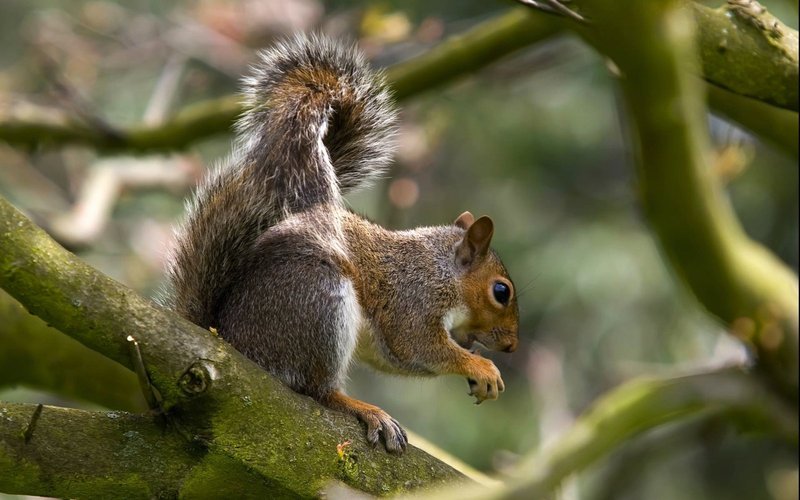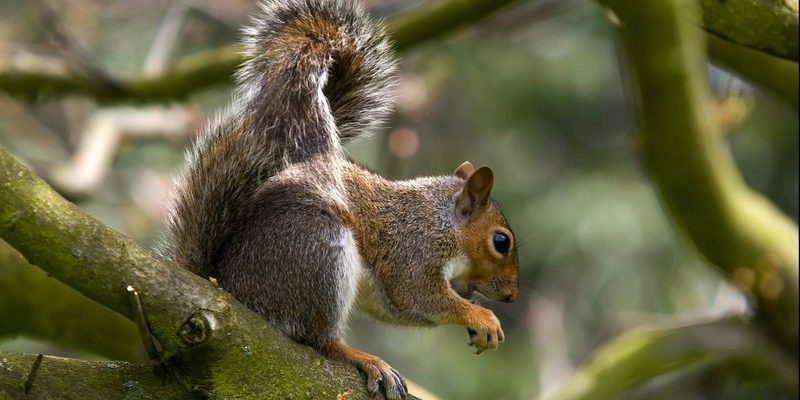
Squirrels, specifically the tree squirrel, are often found in wooded areas, parks, and even suburban neighborhoods. They play a critical role in the ecosystem by helping to disperse seeds and nuts, which promotes forest growth. But what’s really intriguing is how these small mammals navigate their surroundings, locate food, and adapt to various challenges. Let’s unpack their diet and hunting strategies step by step.
What Do Tree Squirrels Eat?
Tree squirrels have a pretty diverse menu, which helps them adapt to different environments. They mainly feast on nuts, seeds, fruits, and even some fungi. Think of them as the foragers of the forest, always on the lookout for their next meal.
– Nuts and Seeds: Acorns, walnuts, and pecans are among their favorites. These items are rich in calories, giving squirrels the energy they need to scamper around.
– Fruits and Vegetables: Tree squirrels also enjoy munching on fruits like apples, berries, and even corn if it’s available. You might spot them raiding your garden or bird feeder!
– Fungi: Believe it or not, squirrels are known to eat mushrooms. Some types provide essential nutrients, and they’ve even been seen sniffing out truffles, a rare and prized fungus.
Here’s the thing—while they have a varied diet, nuts are particularly crucial because they provide a source of fat and energy required for their active lifestyle. But what happens when food is scarce? Let’s explore how these clever animals adapt their hunting strategies.
Hunting Strategies: How Do Tree Squirrels Find Food?
You might wonder how these little guys locate food in the vast wilderness. Tree squirrels rely on a mix of sharp instincts and keen senses. Honestly, you could say they’re like tiny detectives, using their skills to sniff out and locate their meals.
– Using Their Senses: Squirrels have excellent vision, especially while spotting food high in the trees. Their sense of smell is also strong, helping them detect the scent of nuts buried underground.
– Memory Skills: Believe it or not, squirrels are great at remembering where they’ve hidden food. They often bury nuts and seeds in various locations, creating a mental map to retrieve them later.
Imagine this: a squirrel finds an acorn, buries it in a soft patch of dirt, and then hops away. Days, or even weeks later, that same squirrel can return to dig it up. It’s like having a backup pantry under the ground!
The Role of Seasonality in Food Availability
The changing seasons heavily influence the diet of tree squirrels. Each season brings new challenges, but squirrels are masters at adapting to these shifts.
– Autumn: This is a squirrel’s feast time. The trees drop nuts, and the ground is full of seeds. Squirrels become busy little bees, gathering and hoarding as much food as possible to prepare for winter.
– Winter: During the colder months, food becomes scarce. Squirrels rely on their hidden stash of nuts. They’ve developed an impressive strategy of not touching all their stored food at once, which helps ensure they have enough to last until spring.
– Spring and Summer: As the weather warms, squirrels shift their diet to include budding flowers, fruits, and insects. This variety helps them to stay healthy and energized.
By understanding these seasonal patterns, it becomes clear how adaptable and resourceful tree squirrels are in their quest for survival.
Social Behavior and Food Sharing
You might think that tree squirrels are solitary creatures, but they do exhibit interesting social behaviors, especially when it comes to finding food.
– Watcher and Forager Dynamics: Sometimes, while one squirrel digs for food, another acts as the lookout. This strategy helps them stay aware of potential threats from predators.
– Food Sharing: In some cases, squirrels will share food with each other. This behavior is more common among related squirrels or during times of plenty. It’s a bit like family sharing a meal—everyone wins!
Watching squirrels interact can be quite a treat. Their chatter and body language convey important messages, helping them coordinate their foraging efforts while keeping an eye out for danger.
How Tree Squirrels Adapt to Urban Environments
As more people move to cities, tree squirrels have adapted to urban life quite well. They’ve become experts at navigating human spaces.
– Finding Food in Cities: Urban squirrels often forage from bird feeders, gardens, and parks. They’re not shy about munching on food left behind by humans. It’s almost like they’ve learned the best dining spots in town!
– Overcoming Obstacles: In cities, squirrels face new challenges, such as traffic and taller buildings. However, they’ve adapted by becoming agile climbers, darting across power lines and navigating around obstacles with ease.
You might have noticed a squirrel investigating a picnic table or scampering along a fence. Their ability to adapt shows just how clever they are when it comes to surviving in different environments.
The Importance of Tree Squirrels in the Ecosystem
Tree squirrels don’t just live their lives for themselves; they play a vital role in maintaining the health of ecosystems. As they forage and stash food, they inadvertently help plant new trees and promote forest growth.
– Seed Dispersal: By hiding nuts and seeds, squirrels help promote the growth of various tree species. When they forget about their buried treasures, those seeds can sprout into new plants. Nature’s own gardeners!
– Food Source for Predators: Squirrels also serve as a food source for various predators, including hawks, foxes, and snakes. This connection helps maintain the balance within food chains, supporting a diverse ecosystem.
Squirrels may seem like small players in the grand scheme of the ecosystem, but they contribute significantly to environmental health and biodiversity.
Tree squirrels are truly remarkable creatures, showcasing incredible adaptability in their diets and hunting strategies. From their varied menu of nuts and fruits to their clever foraging techniques, they navigate their environments with a mix of instinct and intelligence. Their role in the ecosystem, from seed dispersal to sustenance for predators, highlights their importance in nature.
Next time you see a squirrel scurrying about, take a moment to appreciate the little strategies they employ. Whether they’re zigzagging through trees or raiding your yard, they’re using instinct and skill to thrive. So let’s give a nod to these fluffy acrobats of the forest. They’re not just cute; they’re fascinating little survival experts!

